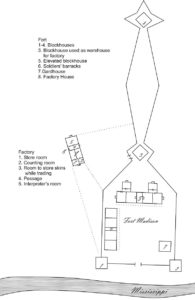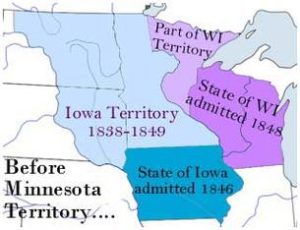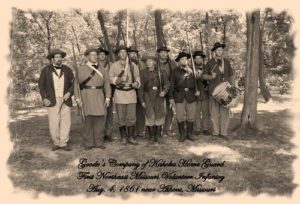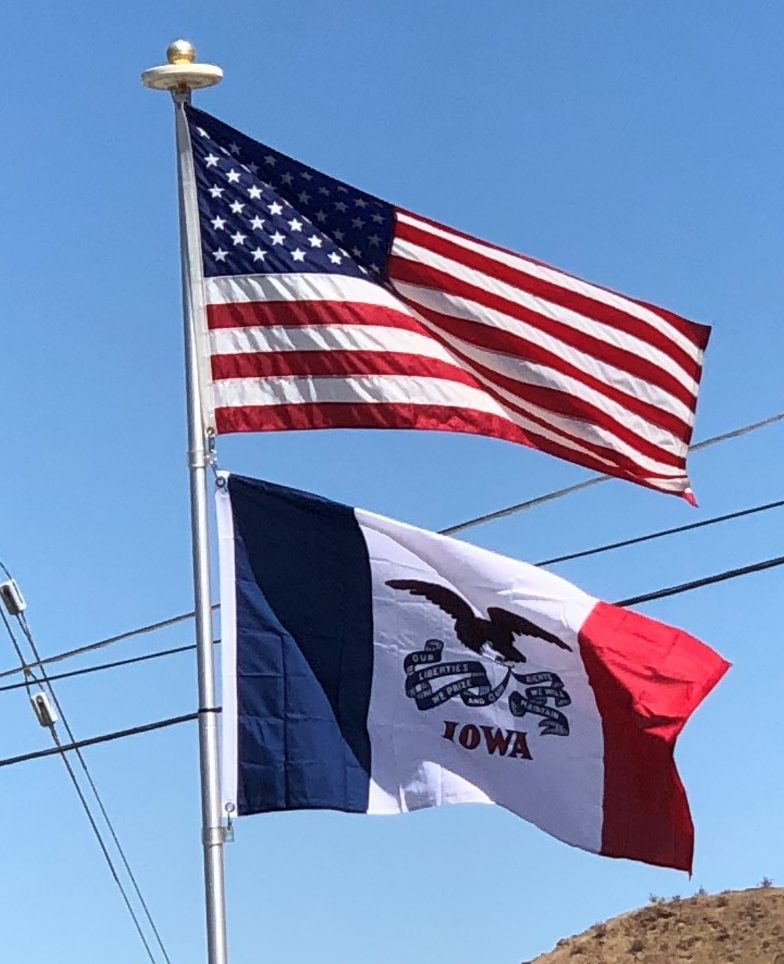
After the war, the U.S. re-established control of the region through the construction of Fort Armstrong, Fort Snelling in Minnesota, and Fort Atkinson in Nebraska.

Trade and Indian Removal, 1814–1832:
The U.S. encouraged settlement of the east side of the Mississippi and removal of Indians to the west. Trade continued in furs and lead, but disease and forced population movement decimated Indian cultures and economies. A disputed 1804 treaty between Quashquame and William Henry Harrison that surrendered much of Illinois to the U.S. enraged many Sauk and led to the 1832 Black Hawk War. As punishment for the uprising, and as part of a larger settlement strategy, treaties were subsequently designed to remove all Indians from Iowa.
The Sauk and Meskwaki were pushed out of the Mississippi valley in 1832, out of the Iowa River valley in 1843, and out of Iowa altogether in 1846. Many Meskwaki later returned to Iowa and settled near Tama, Iowa; the Meskwaki Settlement remains to this day. In 1856 the Iowa Legislature passed an unprecedented act allowing the Meskawki to purchase the land; Indians were not usually permitted to do so. The Ho-Chunk were removed from Iowa in 1850, and the Dakota were removed by the late 1850s. Western Iowa around modern Council Bluffs was used as a way station for other tribes being moved west, including the Potawatomi.
U.S. Settlement and Statehood, 1832–1860:
The first American settlers officially moved to Iowa in June 1833. Primarily, they were families from Ohio, Pennsylvania, New York, Indiana, Kentucky, and Virginia. On July 4, 1838, the U.S. Congress established the Territory of Iowa.

Almost immediately after achieving territorial status, a clamor arose for statehood. On December 28, 1846, Iowa became the 29th state in the Union when President James K. Polk signed Iowa’s admission bill into law. Once admitted to the Union, the state’s boundary issues resolved, and most of its land purchased from the Indians, Iowa set its direction to development and organized campaigns for settlers and investors, boasting the young frontier state’s rich farmlands, fine citizens, free and open society, and good government.
Civil War, 1861–1865:
Iowa supported the Union during the Civil War, voting heavily for Abraham Lincoln, though there was a strong antiwar “Copperhead” movement among settlers of southern origins and among Catholics. There were no battles in the state, although the battle of Athens, Missouri, 1861, was fought just across the Des Moines River from Croton, Iowa, and shots from the battle landed in Iowa. Iowa sent large supplies of food to the armies and the eastern cities.

Agricultural Expansion, 1865–1930:
The introduction of railroads in the 1859s and 1860s transformed Iowa into a major agricultural producer.
In 1917, the United States entered World War I and farmers as well as all Iowans experienced a wartime economy. For farmers, the change was significant. Since the beginning of the war in 1914, Iowa farmers had experienced economic prosperity. In the economic sector, Iowa also has undergone considerable change. Beginning with the first farm-related industries developed in the 1870s, Iowa has experienced a gradual increase in the number of business and manufacturing operations.
Depression, World War II, and the Rise of Manufacturing, 1930–1985:
The transition from an agricultural economy to a mixed economy happened slowly. The Great Depression and World War II accelerated the shift away from smallholder farming to larger farms, and began a trend of urbanization. The period since World War II has witnessed a particular increase in manufacturing operations. While agriculture continued to be the state’s dominant industry, Iowans also produce a wide variety of products including refrigerators, washing machines, fountain pens, farm implements, and food products.
